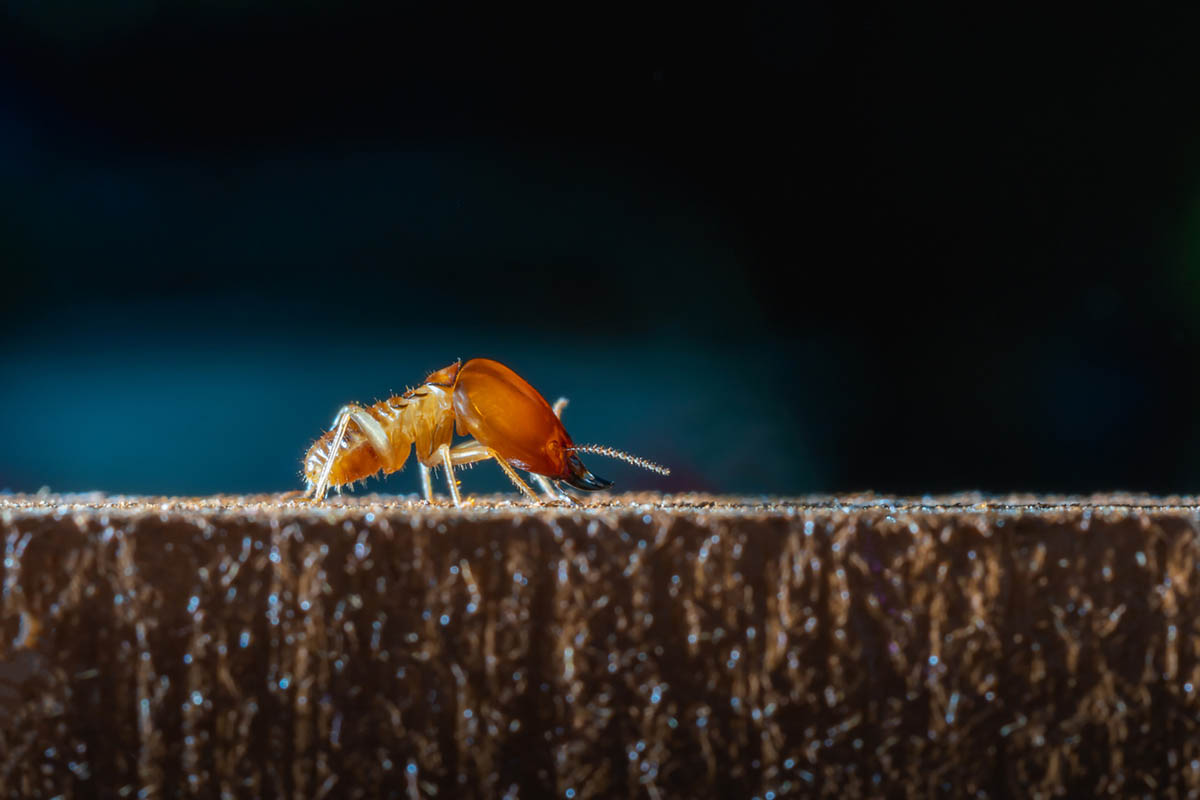We may earn revenue from the products available on this page and participate in affiliate programs. Learn More ›
Termite infestations can be a real problem for homeowners, with some causing significant, lasting damage. These pests will colonize within a home, feeding on and destroying the house’s wood.
If not addressed promptly and adequately, termites can cause extensive and often permanent structural damage to a home. Fortunately, there are plenty of termite control methods to choose from. Homeowners can use DIY methods to control small infestations and prevent future ones, but in most cases, hiring an exterminator is the best bet.
Time required: Several hours to a few days
Difficulty: Expert
Estimated cost: $8 and up; $229 to $967 for professional service
Tools & Materials
Bobvila.com may earn a commission from purchases made through these links.
- Gloves
- Termiticide barrier
- Termite bait
- Beneficial nematodes
- Termiticide liquid or powder
- Orange or neem oil
- Dish soap
- Boric acid
Before You Begin…
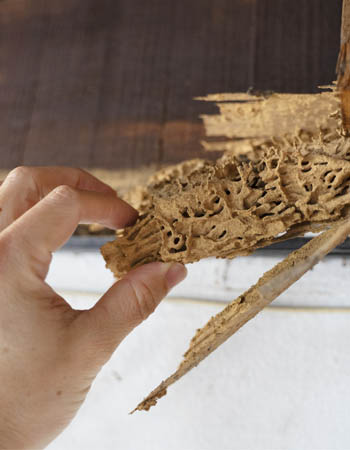
Before a homeowner starts to treat their house for termites, they’ll first need to determine where the colony is located and the extent of the damage. Homeowners will want to remember that termites can be elusive; they shouldn’t assume that finding termite droppings but no termites means that the colony has moved on. Because termites can live within the walls of a home, it is best for a homeowner to call an exterminator to assess the damage, find the colony, and give a quote. Large infestations of termites will need to be handled by a professional exterminator, as these pros have experience, knowledge, and commercial-grade products to manage them.
Termites vs. Ants
At first glance, it may be difficult for a homeowner to tell the difference between termites versus ants. Before beginning termite treatment, homeowners will need to determine whether they have a termite or an ant infestation. Flying ants are often mistaken for termites since both have wings and antennae. However, flying ants can be distinguished from termites by their bent antennae, pinched waists, and combination of short and long wings. So what do termites look like? By contrast, termites have straight antennae, undefined abdomens, and a set of four wings of equal size. There are quite a few other bugs that look like termites, so if the bug that is present doesn’t fit either of these descriptions it’s worth homeowners doing some additional research.
The damage caused by flying ants is also not nearly as destructive as that of termites. Termites are notorious for eating wood, causing it to become hollow and warped. Sometimes termite colonies can go unnoticed for months or even years before their presence is discovered by homeowners. In these cases, it will be extremely difficult to eliminate them without the help of a professional. By contrast, flying ants do not eat wood and instead are more likely to raid the pantry or trash can for their meals. It’s generally easier to get rid of flying ants, and most homeowners can handle the job themselves.
Tips for Getting Rid of Termites
- The best method for getting rid of termites is to prevent an infestation from ever happening. Homeowners can regularly take steps to prevent termites, such as regulating the amount of moisture in the house.
- Once the initial extermination is completed, homeowners will need to continue to treat their homes for termites on a regular basis.
Safety Considerations
- Whenever using hazardous chemicals, wear proper personal protective equipment, such as safety goggles, a mask, and gloves.
- Termites can hide in gutters and pipes, so make sure ladders are secure when investigating high spaces.
STEP 1: Determine the type of termite infestation.
The first step for homeowners who believe they have termites is to look for the signs of a termite infestation. They’ll want to examine sagging floors, holes in woodwork, and any hollow parts in the home’s foundation. If the wood falls apart easily, this could be a sign of a termite problem.
Homeowners will also need to determine what variety of termite is infesting their house. The most common types of termites are subterranean, drywood, and dampwood. Other common varieties, such as conehead and Formosan, fall under these categories. Subterranean termites are found anywhere in the United States and thrive in both soil and wood. Drywood termites are primarily in coastal states such as California, Texas, Louisiana, and Florida and live solely in wood. Dampwood termites live in the West and Pacific Northwest but are occasionally found in Florida. According to Steven Dupuy, technical service manager and termite expert at Rentokil Terminix, “Different species cause different damage. Drywood termites have smaller colonies— up to 700 termites—so they do less damage. This species of termites doesn’t need ground contact and can swarm into a building to start a new colony. Formosan termites can have 7 million termites in a colony and can do a lot more damage in a shorter period of time.”
- Conehead termites are a variety of drywood termite that can be identified by their cone-shaped heads and dark coloring. Unlike many other termite varieties, they nest and travel above ground. While conehead termites originated in Central America and the Caribbean Islands, they can also be found in Florida.
- Dampwood termites prefer wet and damp environments, as their name suggests. For this reason, they are less likely to invade a home—but when they do, they are quite destructive. Dampwood termites can be found along the West Coast, Northwest, and Southwestern United States
- Drywood termites are hardier than other varieties but may be less destructive due to their smaller colonies. In the wild, they inhabit dried-out wood and dead trees, but in a home they might target decks or flooring. Drywood termites are found in many southern states and California.
- Formosan termites live in relatively large colonies and create mud tubes with access to food sources. This variety is also drawn to moisture and light. Formosan termites can be found in the South, California, and Hawaii.
- Subterranean termites are notorious for being among the most destructive termite varieties and having the biggest nests. They are also some of the most common as they are found in all U.S. states with the exception of Alaska.
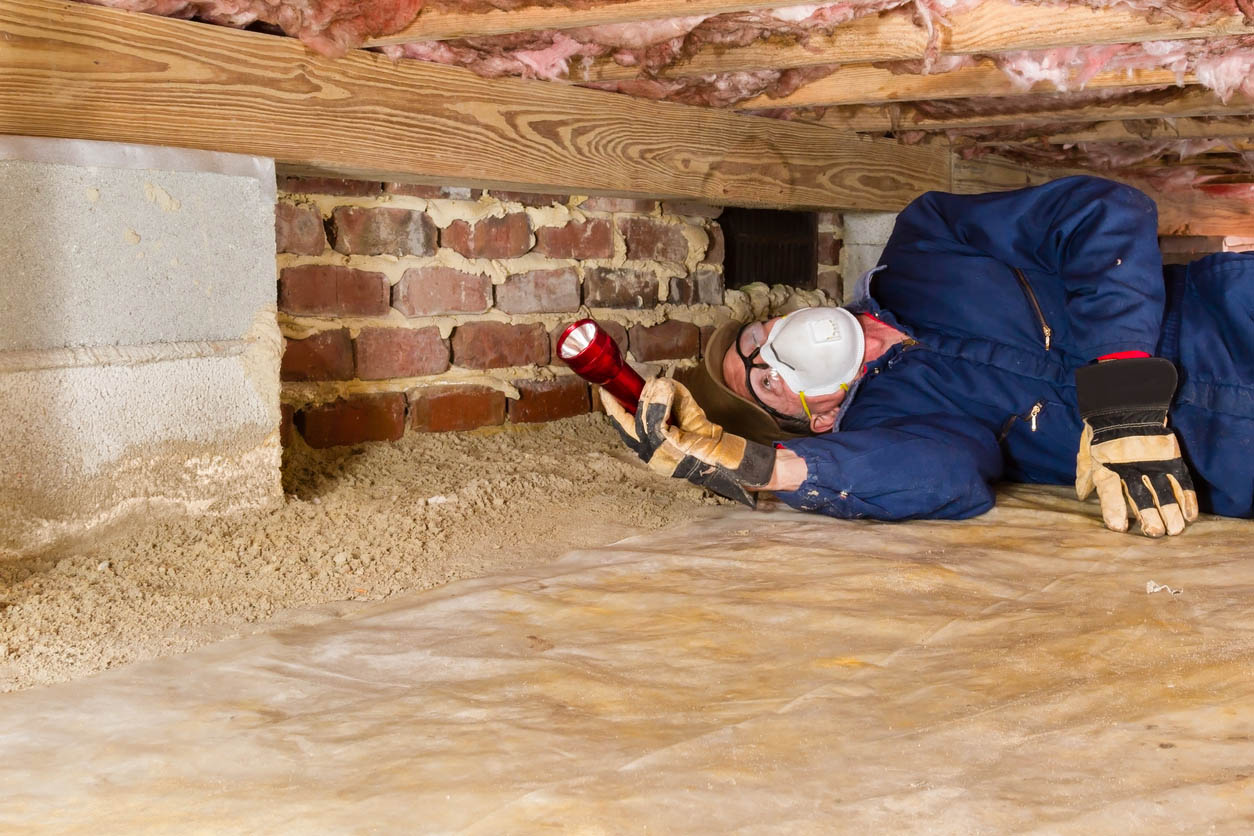
STEP 2: Eradicate subterranean termites with termiticide barriers, termite baits, and beneficial nematodes.
Subterranean termites can be eradicated through a variety of methods. The best termite treatments and termite baits are professional-level products that set up a perimeter around a home. When a termite eats treated materials and returns to its colony, the termite will die and spread the poison to other termites. It’s important to note that professional-grade pesticides may be difficult to come by and risky to use without experience. “Professionals go through a lot of training to use these products, and misapplications can be dangerous,” says Dupuy. “In most states, there are regulations that must be followed as well.” Direct chemicals are another option for termites found inside the home. This product comes in a foam termite spray that can be applied along cracks or gaps in walls where termites are entering. Once the foam evaporates it will be toxic to termites and kill them on contact. Beneficial nematodes are natural parasites that can be used as another eradication method to poison and destroy a colony. When eaten by a termite, the nematodes will burrow into the termite’s body, poisoning it from the inside. Beneficial nematodes can be purchased online or at most garden stores. The best way to use these parasites is to combine the nematodes with water and potting soil and spread the mixture around the border of the home.
STEP 3: Exterminate drywood termites with essential oils and termiticide.
Termite spot treatment involves drilling holes into the wood where termites nest, filling the holes with termiticide, and sealing the holes. Termites are not able to detect termiticide on the wood and will ingest the poison unknowingly. Not only are termites who eat the termiticide affected, but one infected termite can spread the poison around to the rest of the colony like a viral infection. Drywood termites can be also exterminated with household items such as essential oils. Orange and neem oils inhibit termites’ ability to lay eggs or shed skin. To use these oils, combine 2 cups of water with 10 drops of oil and a squirt of dish soap in a spray bottle, then spray it onto the infested area.
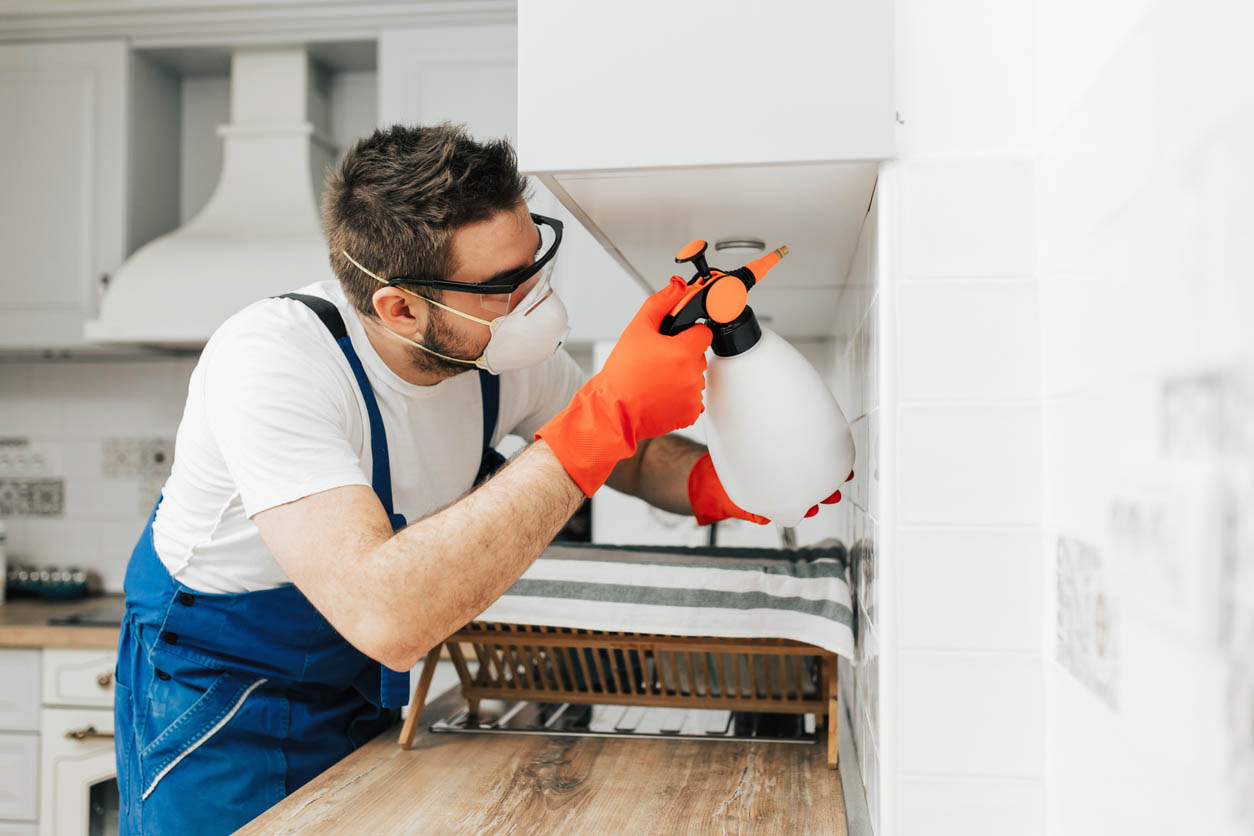
STEP 4: Spray boric acid on wood, in the garden, and on any spots where there’s an infestation.
Boric acid is an ingredient found in most termite insecticides and is a reliable method for eliminating colonies. While this substance will not kill termites immediately, when ingested it prevents their system from receiving nutrients from the wood they eat. Termites who eat wood treated with boric acid or lick the substance from their own bodies will starve to death as the acid takes effect. Boric acid can be found at any home improvement store and often comes in the form of a powder. One option is to sprinkle it in any areas where termites are present. Some homeowners find it more effective to mix the powder with water before spraying. It’s a good idea to wear a mask and goggles while handling boric acid to avoid irritating the eyes or lungs.
STEP 5: Make a DIY trap with wet cardboard.
Another DIY solution is to create a cardboard trap. This simple method requires taking two wet pieces of cardboard and stacking them on top of one another. The cellulose in the cardboard will attract the termites and they’ll get stuck within the pieces. The cardboard can then be taken outside and burned. This, however, is not an efficient method, as it may not kill all the termites or the colony. Termites will also begin to catch on and avoid the trap if dead termites are left in place for too long.
STEP 6: Use diatomaceous earth to get rid of termites.
Diatomaceous earth (DE) is the powder form of diatom fossils, which are tiny, naturally occurring organisms. While diatomaceous earth appears to be a consistency that’s similar to cornstarch or flour, to termites the substance is sharp and will penetrate their outer shells on contact. Once termites lose this protective outer layer, the DE will dehydrate the insects in a matter of hours. Sprinkling the powder around the home wherever there are signs of termites can go a long way toward wiping out a colony. While nontoxic to humans, DE can be mildly irritating to the skin, eyes, and lungs, so it’s a good idea to wear a mask, gloves, and eye protection when handling the powder.
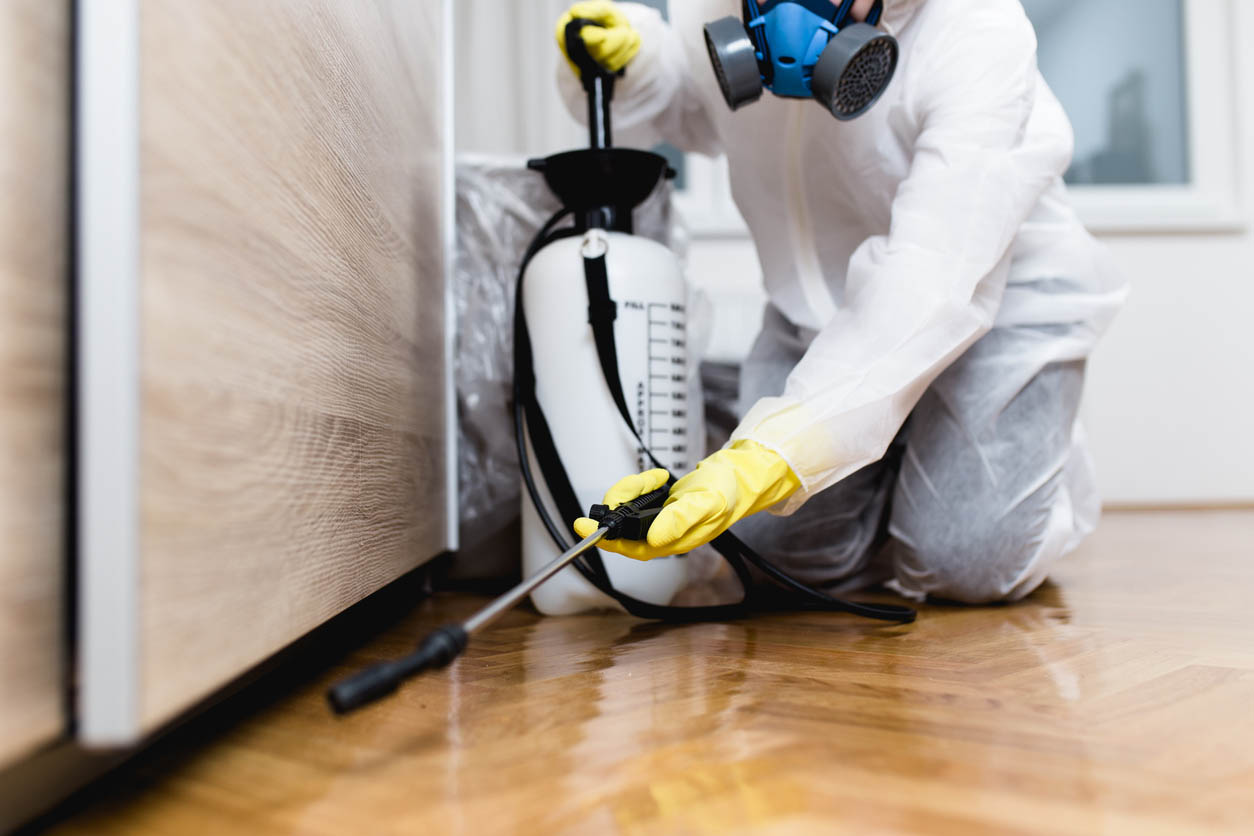
STEP 7: Hire a professional if you need help or if the infestation is too large to handle with DIY methods.
Because of their scope, termite infestations can be difficult to fully eradicate. If the infestation is not confined to just one area, it’s in a homeowner’s best interest to call in a professional exterminator to handle it. Professional pest control technicians will have access to tools and pesticides that are not available to the average homeowner, and they will have the knowledge and expertise needed to use them properly. They may also be able to locate additional colonies in locations that are not obvious, saving homeowners the expense of future repairs. While termite control costs may seem high at first, the cost of termite damage repair down the road is likely to be much more significant. The best termite control companies (like Terminix or Ehrlich) also offer guarantees that they will return and apply additional treatments if the problem persists. Additionally, depending on the amount of damage termites have done, it may be necessary to bring in professionals to repair any structural damage that remains from the infestation.
STEP 8: Set up preventive measures, such as adding sand around the home, installing steel mesh, and filling in cracks and crevices.
The best way to get rid of termites is to not have them to begin with. According to Dupuy, “Preventive treatments end up saving you the most money. The stress you experience when having termites in your home could be easily prevented by protecting your home or business before you have problems.” There are simple termite prevention measures that any homeowner can purchase and easily apply to avoid a termite infestation. One method is to walk around the outside of the home and caulk or repair cracks, gaps, and crevices where termites (and other pests) may be able to gain entry. Some of the most common culprits are windows and doors, but anywhere that pipes or ductwork are routed outside will also need to be checked. Subterranean and dampwood termites love moisture, so repairing leaks in the home’s plumbing or roof will make it less attractive to these varieties. Lastly, for new builds or repairs, choosing materials like termite-resistant wood can stop an infestation before it begins. Termite prevention costs are lower than the cost of extermination and can save homeowners a major headache down the road. Professional termite control specialists can also provide additional suggestions for how to prevent termites. Even if termites still find a way into the home, being proactive with termite prevention and scheduling inspections can reduce the chance of major damage occurring; this is important, since homeowners insurance covering termite damage would be unlikely.
STEP 9: Clear away debris, such as wood mulch or piles of wood, from around the home’s perimeter.
Knowing what attracts termites and where they nest can help homeowners make their homes less hospitable to these pests. Termites feast on materials such as wood that are rich in cellulose, and many varieties tunnel through soil. As a rule of thumb, any parts of the home where wood meets the ground can be viewed as potential entry points for termites. Homeowners who keep wood piles in their yards will want to avoid stacking them against the side of the home. Similarly, moisture in mulch can attract termites, and having it around the perimeter of the home can direct them to the house’s foundation. As an alternative, consider spreading sand immediately around the home since termites cannot burrow in the sand as easily as soil or mulch. Having gutters cleaned regularly is also good for prevention as the damp environment of a gutter clogged with leaves is attractive to termites and other insects.
STEP 10: Schedule regular inspections to catch termites before they cause any damage.
The longer a termite infestation goes unchecked, the higher the potential costs of future termite damage repairs. Some homeowners have no idea that they have termites until the pests have done enough damage to make the home structurally unsound. During a termite inspection, a technician will thoroughly check both the exterior and interior of the home, paying special attention to potential hot spots such as attics and crawl spaces. They also have the expertise to differentiate between termite damage versus wood rot and can use tools such as thermal imaging cameras to identify moisture issues. If inspectors find signs of an infestation, such as termite droppings, they can recommend the best course of action for extermination. If they find no evidence of termites, homeowners can rest easy with the reassurance that their home is termite-free until their next appointment. On average, homeowners can expect termite inspection costs to be around $133, although some companies offer the service for free. If they do find termites, they can advise the homeowner on how to fight off termites and keep them away.
Termites can be a difficult pest to deal with, especially in warmer weather. For smaller infestations, there are many DIY solutions that homeowners can use and apply to get rid of termites. However, when dealing with large infestations, homeowners will want to look up “termite control near me” to choose a termite company that can handle the issue.
